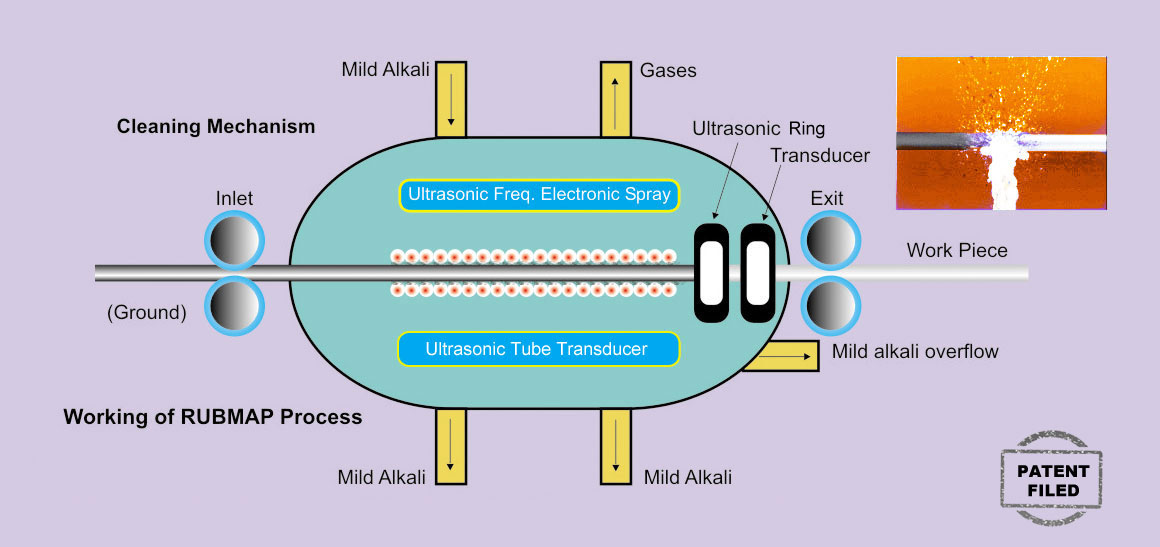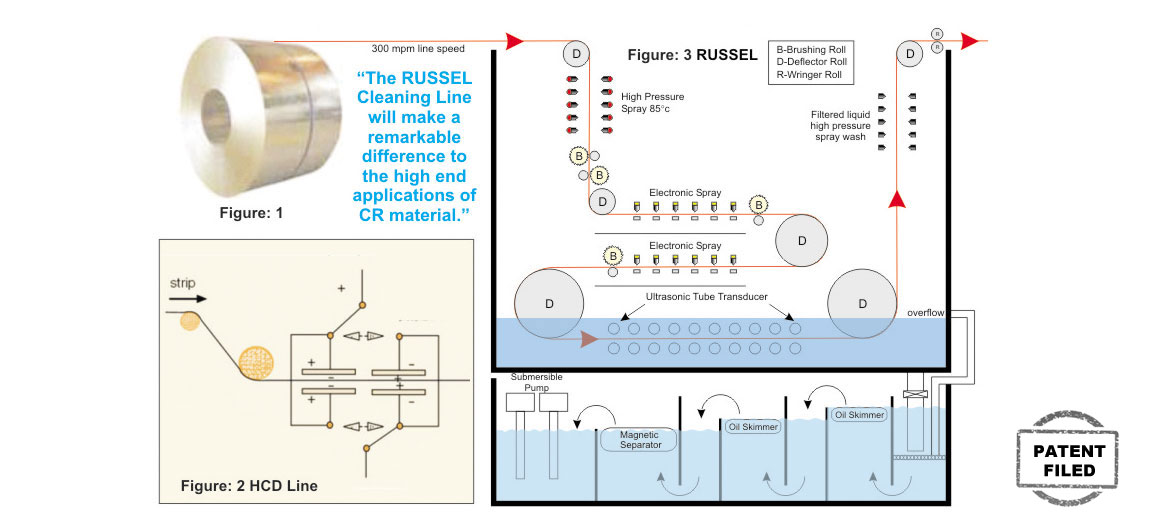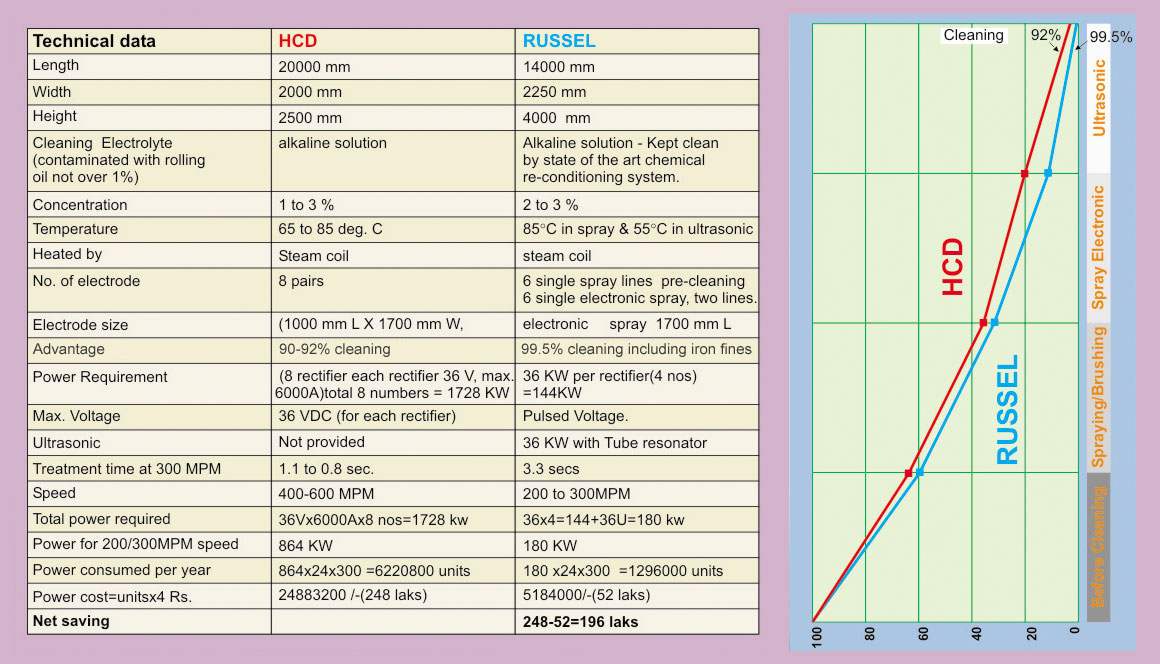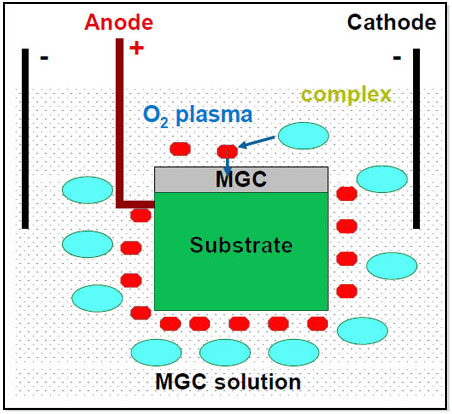Descaling & Coating - Win your battle against Acid Pollution
Welcome to the world of Possibilities
RUBMAP Online De-scaling of steel rod, Rebars, Wires & RUSSEL Online Ultrasonic Cleaning of CR Steel Coils.
RUBMAP - Ralsonic Ultrasonic Bubble Micro Arc Process. An Extension of Thermal deburring process developed by Ralsonics.
What is Thermal deburring - Sudden rise in material temperature for short time causes differential expansion of burr and parent material. This snaps mechanical connection of burr to parent material on microscopic scale.
RUBMAP is latest technology that forms microscopic micro-arc on surface of object. Ultrasonic frequency electronic pulse is applied across ultrasonic spray bubble formed on surface of material. The differential thermal expansion of scale and base material breaks the bond of scale from Parent material. Ultrasonic frequency works at micron level bubbles and hence forms micro arcs of micron sizes resulting in surface structure modification. Hence complete removal of scale is possible.
RUBMAP removes Lubricants & heat treated scale and other undesirable debris from metal wire, rods, rebars alike. Treated surfaces are exceptionally clean. dry & PH neutral and do not allow rusting for several days. The process totally eliminates acids, caustics and solvents traditionally used in wire & rod industry reducing environment, health & safety hazards and costs associated with handling and disposal of hazardous waste. Ralsonics focused beam high frequency Ultrasound system powered by high power generator removes all the loosened scale and debris by cavitations action.

RUBMAP Equipment cost is Negligible compared to cost of Acid Regeneration plant used for pollution control measures
RUSSEL - Ralsonics Ultrasonic Spray Electicnic Cleaning Line will make remarkable change to economy of Production of CR material. Typically Galvalume And Auto-Quality coating lines.
On your galvanizing or coating line, the strip surface has to be spotless when it enters the annealing furnace.
The Trilemma ! A Low Current density. -LCD Electrolytic cleaning line with mechanical brushing units remove about 80% of the black Carbon oil patches, resulting in cracking of rolling mill lubricants during the annealing phase. These sheets are not acceptable in sectors where Aesthetics ("Look and Feel" after painting) is desired. But being a cheaper solution often used by processors looking for economy.
On the other hand a High current density.- HCD Electrolytic cleaning line with multi brushing roll units can clean cold rolled annealed strips often upto 92% purity but consumes very high power, 36 volts,48000 amperes or 48 volts 24000 amperes, often resulting in surface marks from un-controllable high current crossovers.
Ultimate Solution RUSSEL- Ralsonics Ultrasonic Spray Electronic cleaning line removes all contaminants to to 99.5% with huge saving on electric power. Pays far he line cost in one year.

Comparison of HCD (high current density) Electrolytic Cleaning Section of large Indian steel company manufacturing Auto quality coated sheets and RUSSEL Ralsonics Ultrasonic Spray Electronic cleaning line
Multiple cleaning operations in steel strip cleaning. Cleaning Degree in Continuous Strip Cleaning Processes

RUSSEL pays for itself in less than a year in cost of electricity saving alone
Rubiit Sonolyte process- Extension of Rubiit RUBMAP process

-
Sonolyte is a new, Oxygen plasma Ultrasonic surface treatment for aluminium, magnesium and titanium alloys. It transforms the metal surface to a hard, dense and adherent metal oxide ceramic or nitride layer.
The components immersed in a high frequency Ultrasonic aqueous, phosphate/Nitride-based solution produces a hard, dense and adherent layer of metal oxide/Nitride ceramic, and can be engineered for thickness of the microstructure of 5 to 100µm thick.
The process enhances the wear, tribological and corrosion properties of a component surface and may be applied to surfaces of complex geometry with in-accessible areas. Since applied at temperatures between 80 to 100°C., consequently, it does not disturb microstructure of base material. A uniform coating thickness is applied over geometrically complex and restricted access surfaces, such as inner surfaces and holes also. A further advantage is that Sonolyte coated parts can be repaired easily by re-application, since Sonolyte process is applied preferentially in areas where the coating is thinnest, and without the need to remove the remaining, undamaged coating.
This is Green process, commercially and technically competitive alternative to a number of widely used processes including hard anodising, electroplated hard chrome and thermally sprayed coatings. , there is a strong need to identify new coating processes that can meet the requirements of recent environmental legislation with better coating performance. Being environmentally clean process, using a chemicals/solutions that requires no significant treatment prior to disposal.